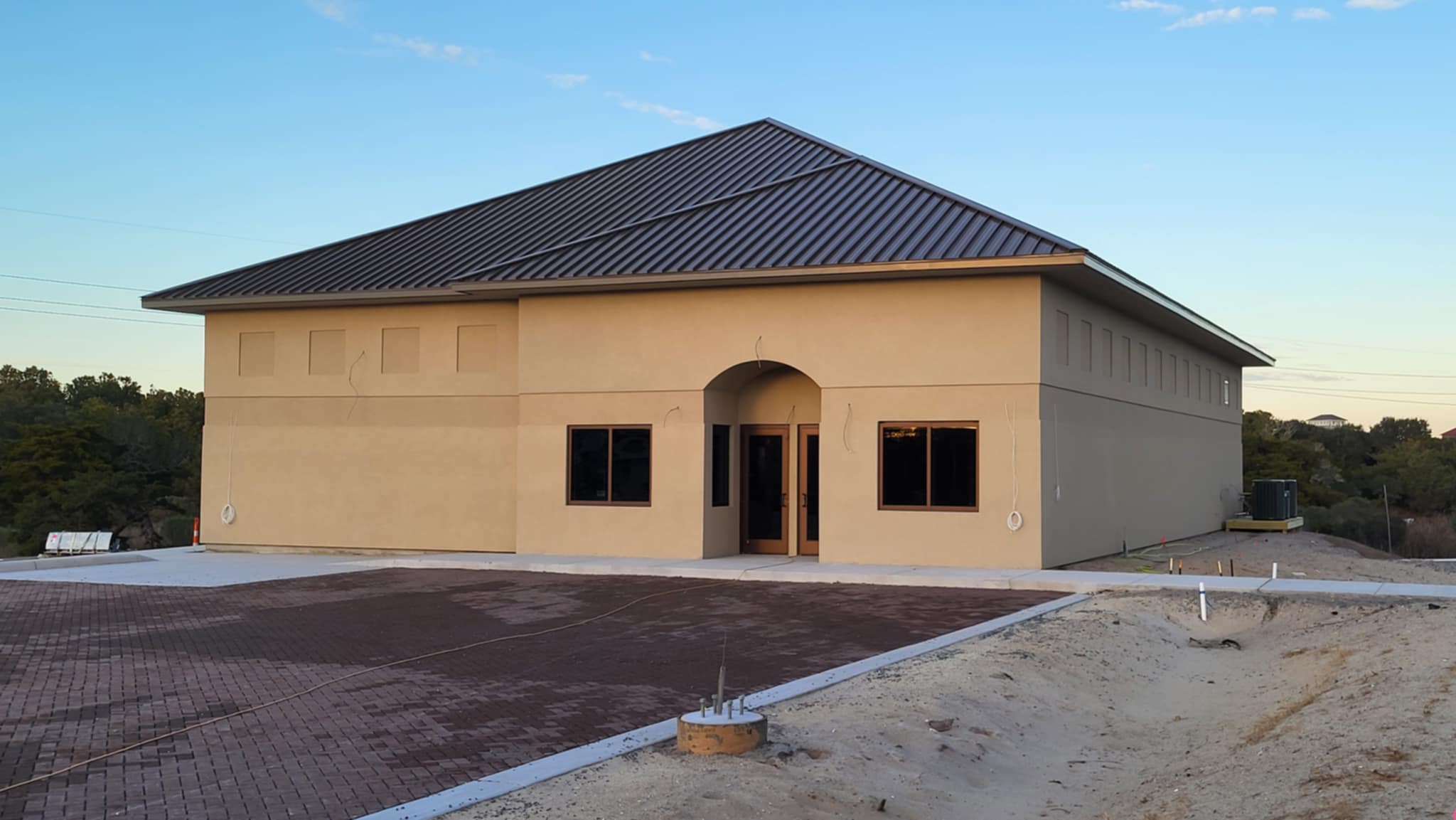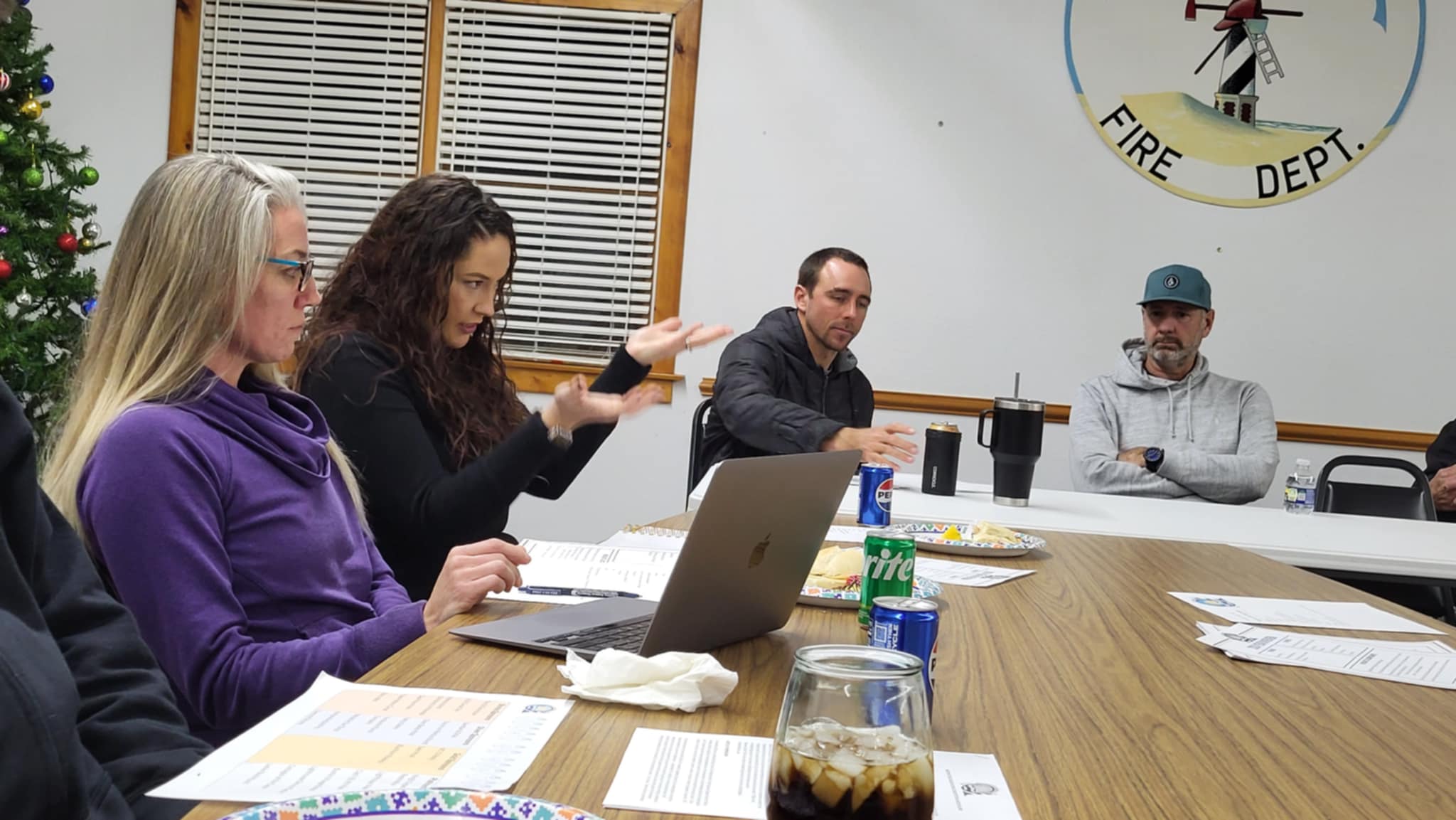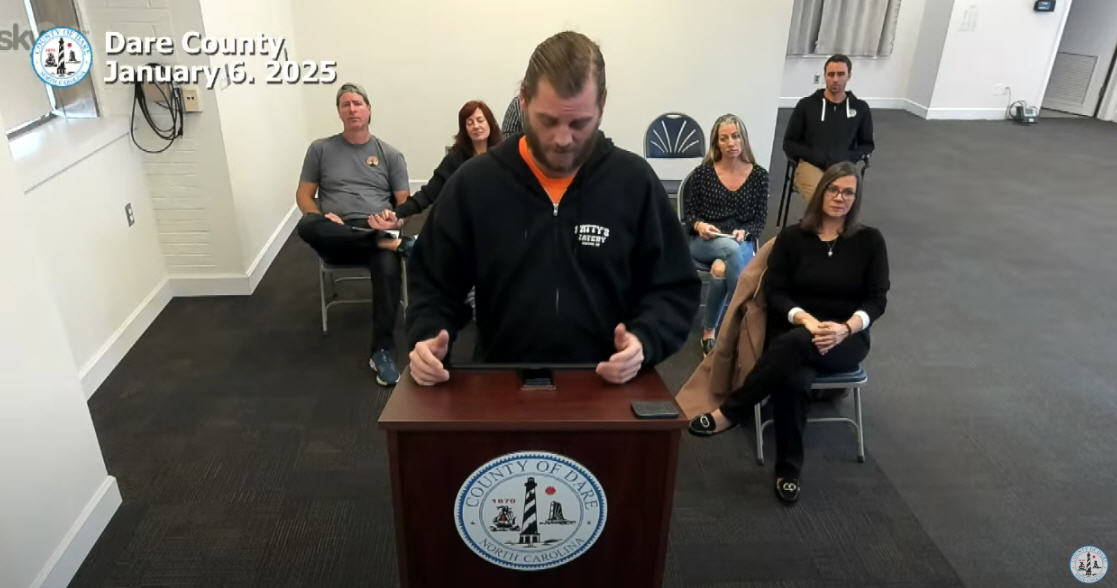Exterior paint removal will begin soon as Cape Hatteras Lighthouse restoration continues

Six months into an extensive restoration project, the Cape Hatteras Lighthouse already looks like a different structure, thanks to a tower of scaffolding that was erected around the lighthouse in the spring.
Now, residents and visitors can expect another major change in the lighthouse’s appearance, as the exterior paint is scheduled to be removed in the not-so-distant future.
“That part [of the project] will start in the next couple of weeks, and it should all be removed by early August,” said Lindsey Gravel, Site Quality Control Manager for the project’s contractor, Stone and Lime Historic Restoration Services.
While the upcoming paint removal will likely be one of the most visible aspects of the 18-month project, behind the scenes, work continues to tackle the many details of restoring a weather-worn lighthouse to its original 1870 condition.

May and June were highly active phases of the Cape Hatteras Lighthouse restoration project. Interior paint removal has progressed in earnest, (and is more than 50% complete), and a metal conditions assessment has been conducted which has uncovered a new list of repairs or replacements that need to be made to the rafters, brackets, and other structural elements.
Phase one of the new concrete and brick pathway construction is complete, and in early June, roughly 1,200 to 1,500 new plants were added to the landscape. The seedlings include five different native species, like sea oats and bright red Gaillardia flowers (Joebells), and they were added on top of more than 2,000 cubic yards of imported sand, which was dredged from an offshore site close to Avon.
Frequent visitors to the Cape Hatteras Lighthouse may remember the pre-2024 site as a patchwork of grass and bare earth, due to decades of foot traffic. With the new circular pathways and fresh landscaping, the Cape Hatteras Light Station will be more attractive and easier to navigate.
“The whole idea was to just recreate more of a native assemblage of vegetation like you’d see in the back dune area, when the lighthouse was built in the 1870s,” said National Parks of Eastern North Carolina Superintendent David Hallac.
While the 1.5 acres of new landscaping is an unmissable sign of progress, some of the biggest project developments in the past two months have taken place behind the scenes.

Dan Spinella of Artworks Florida is one of the only people in the world who can restore and replicate a Fresnel lens – a historic type of lighthouse lens that was invented in 1819 by French physicist Augustin Fresnel (pronounced “Fruh-nel”).
Spinella was commissioned to create a replica of the Cape Hatteras Lighthouse’s original lens, and while this is his 50th lighthouse project, it is the first time he has created a replica of a first order Fresnel lens – the largest of the eight orders of Fresnel lenses.
Spinella started the project with a prototype – which may be on display at some point in the future -and since then he has been steadily constructing the replica itself, which includes a vast network of moving parts.
“The prism frames are finished, the clockwork is working beautifully, and everything is running smoothly,” said Gravel. “Currently, all that’s really left for him to do is to install the prisms into the prison frames… It takes about an hour for each prism, and there’s just over 1,000 prisms, so he’s got some work ahead of him.”
The primary difference between the replica first order Fresnel lens and its original 19th-century counterpart is the technology powering the illumination. The new lens will have an LED light that will be able to be seen from approximately 18 miles away, and will feature a 10-second flash pattern, which is the original timing in the lighthouse’s history.
While the public will have to wait until the end of the restoration project to admire the not-yet-constructed Fresnel lens replica, the rest of the recent developments in the lighthouse project are on full display. From the multiple-story ventilation system that makes interior paint removal possible, to the newly planted flowers that are just starting to bloom, a large portion of the lighthouse site remains open to curious visitors, which was a primary project goal all along.

“I give a nod to Stone and Lime [Construction], because providing access for our visitors for the duration of the project was very important. For all intents and purposes, this entire site could have been shut down” said Robin Snyder, Deputy Superintendent for the Cape Hatteras National Seashore. “Stone and Lime has worked very well with us to try to maintain access for visitors through all of this.”
Though work is clearly progressing in earnest, the lighthouse restoration project has been in the works for years, with public hearings and proposals initially held in 2021 to identify the best paths forward.
The items that need to be addressed stem from the results of a 2014 Comprehensive Condition Assessment Report and a 2016 Historic Structure Report, and the National Park Service has had funding for the massive $19.2 million project in reserve for years.
Additional items that will be addressed in the restoration include the replacement of approximately 40,000 bricks, (an estimated 15% of the total bricks in the lighthouse), and the installation of a new entrance connecting the parking lot to the Visitors Center.
Also, when the painting, repairs, and new lens installation are complete, at some point, the tower of scaffolding will naturally come down, but that likely won’t occur for at least a year.

Stakeholders, (including Stone and Lime Construction and the National Park Service), are hopeful that despite any future weather-related challenges, the lighthouse will officially reopen to visitors in the summer of 2026.
In the meantime, visitors are welcome to explore the work as it occurs on a day-to-day visit, stop by the Museum of the Sea, (which remains open to the public), and watch in real-time as new life is breathed into a 154-year-old structure.
“This is a symbol of the Cape Hatteras National Seashore, and so an opportunity to see it – even covered in scaffolding – is important as a part of people’s annual family vacations here,” said Snyder. “So, we’re trying to keep any closures to an absolute minimum for that purpose [and] let people experience their lighthouse.”
What to expect in the months ahead
- The exterior paint will be removed in July and August. Based on a previous lighthouse repainting project back in the 1970s, a ghostly indication of the spiral black-and-white spiral pattern may remain, but the lighthouse will primarily look like its bare-bones brick color.
- The lighthouse site will remain open to the public for the duration of the project, although there will be marked-off areas on the grounds where construction activities are ongoing.
- National Park Service educational rangers lead a program that dives into the history of the lighthouse and relays information about the current restoration efforts every day from 11-11:30 a.m. The daily program, which is held at the visitor center pavilion, runs through Labor Day.
- The lighthouse will NOT be open for climbing in the summer of 2024, but will hopefully reopen for the 2026 summertime season. Once the lighthouse does open for climbing, tickets will only be available electronically, similar to the current Bodie Island Lighthouse ticket-purchasing system.
- The public can keep tabs on the progress and details of the Cape Hatteras Lighthouse restoration project on the CHNS website.































